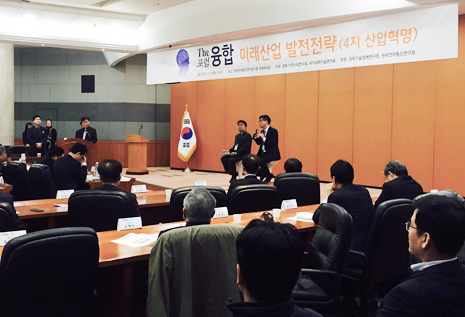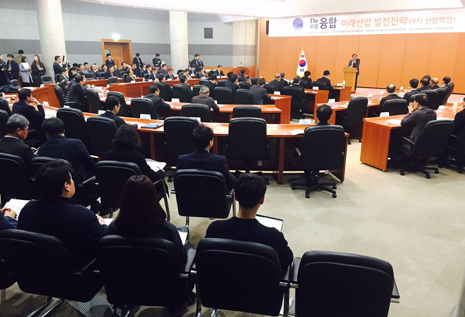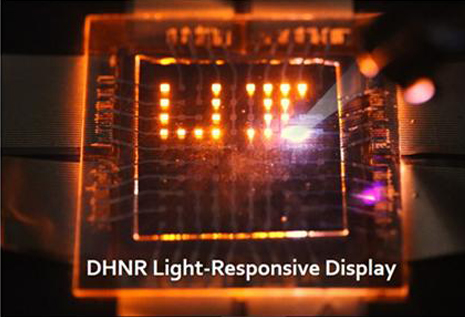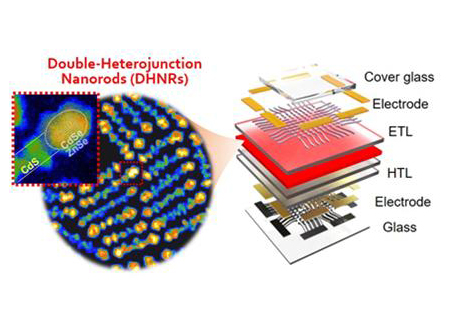
a Playground for the Latest Technologies
The long-awaited era of VR (Virtual Reality) and AR (Augmented Reality) has finally arrived. A number of global ICT companies are introducing innovative products and services related to VR and AR. The Korean government also set the establishment of a VR and AR ecosystem as a national strategic project and is about to support the industry to dominate the global market.
On February 10, the Ministry of Science, ICT and Future Planning opened KoVAC (Korea VR AR Complex) in Sangam DMC Nuriggum Square in Seoul, as a multipurpose complex for VR and AR technologies. The Ministry is planning to invest a total of KRW 40 billion by 2020 to develop Sangam DMC into a hub for the VR and AR industry.
KoVAC is characterized by its one-stop services to enable businesses to complete product development within the premises. To this end, the complex has concentrated supportive functions such as technological training, testing, and marketing, and is equipped with Digital Pavilion, a space open to all developers, businesses, and research institutions to develop and use the latest VR content.
The ground floor of Digital Pavilion houses 4D scanners, studios for VR live broadcasting, and other state-of-the-art equipment and facilities, as a means to help developers and small businesses develop new VR content. The motion capture system, streaming servers, and VR and AR HMB on the first floor are designed to support domestic developers to develop the latest VR and AR content. ETRI will collect the users’ opinions about technological challenges and support quality tests. The second floor will house a VR campus to operate VR programs, and the VR experience center on the third floor provides visitors with an opportunity to have firsthand experience of the newest VR content for free. Open to the general public, Digital Pavilion will allow visitors to experience VR content free of charge and send feedback to relevant businesses.
In addition, the fifth and tenth floors of Nuriggum Square R&D Tower will house the VR Growth Support Center with a mission to nurture competitive global VR and AR companies. Leasing its space rent-free, the center currently houses a total of 18 businesses, including VR-related startups and small businesses. The center plans to facilitate investment pitching and biz-matching to assist tenant businesses in financing required for the development and commercialization of new products. It will also provide dedicated support for marketing by encouraging the tenants to participate in domestic and international exhibitions. The center is home to ETRI In-House R&D Lab as well, which is expected to collaborate with professional technicians in solving various technology-related issues faced by tenant businesses.
Low Power for Greater Distance
Currently, the IoT technology is still in its early stage. Since most IoT services use the Internet delivered by Gigabit Wi-Fi or landline connection, they can be offered only within a limited space and inevitably entail restricted mobility.
To address these issues, ETRI has developed NB-IoT technology to enable low-power, long-distance wireless communications and successfully produced a prototype based on international standards.
NB-IoT has a bandwidth of 200kHz, which is narrower than that of LTE. This narrowband provides slower transmission speed, but its power consumption is lower as well. NB-IoT is different from the existing IoT mode in that the former accommodates more users’ devices by extending the transmission range of a base station and thereby supporting over 50,000 devices within one square kilometer. The battery life is ten years or longer, and the cost is low too, which suggests the feasibility of LPWAN (Low-Power, Wide-Area Network).
In addition, NB-IoT enables communications with a signal strength 100 times weaker than that for LTE. Since it can use the coverage of a base station for mobile phones without modification, the cost for installing base stations will be saved. It is only necessary to upgrade the software of the existing LTE base stations or establish separate, exclusive base stations.
ETRI researchers expect that NB-IoT technology will be installed in various devices and will be fully commercialized by 2018. Once commercialization is completed, the technology will be used for a range of purposes, such as fire detection sensors, security sensors to detect invasion, patient examination monitoring, power metering, and various types of remote metering.
to Upgrade National Defense
Communications Networks
Under the 「U-Experimental Project to Establish All-IP Integration Network」ETRI aims to develop technology to integrate a variety of military communications networks based on their IP data. This endeavor is designed for carrying out experimental research for the full-scale installment of communications networks to national defense networks.
To this date, the military communications networks, tactical networks, and defense radio networks have had different interfaces for IP and ATM (Asynchronous Transfer Mode), which has made interconnection significantly difficult. The new technology developed by ETRI is multifunctional access equipment to integrate and interlock various networks. It provides all-IP convergent networks to ensure survivability so that military communications remain uninterrupted in contingencies.
All-IP integrated network technology combines multiple communications systems in the military. The IP integration equipment is capable of using a single piece of equipment to integrate at least 64 networks of similar grades out of over 100 military networks for various purposes. The technology can control and manage network operation in real time by comprehensively visualizing and determining network status through integrated operation of various types of networks. In this way, communications networks used by the military can be operated as separate networks. When employed in battlefields, the integrated network technology will yield significant effects on NCW (Network-Centric Warfare) through shared situational awareness and swift command and decision-making.
for All Areas
(3rd The Forum Convergence)
On March 6, the NRC (National Research Council for Economics, Humanities and Social Sciences) and the NST (National Research Council of Science and Technology) held The Forum Convergence at the International Conference Room at ETRI Building #7 to discuss development strategies for future industries (Fourth Industrial Revolution).
This forum was designed to converge the humanities community and science and technology communities represented by NRC and NST, respectively, thereby transcending the dichotomy of academic disciplines to ensure mutual understanding and establish a collaborative ecosystem in Korea. This forum marked its third anniversary.
In relation to the forum’s theme “Development Strategies for Future Industries,” over 100 participants shared measures to respond to the era of the Fourth Industrial Revolution and policy vision.
“The Fourth Industrial Revolution requires that we add brains to passive objects and turn them into active objects,” remarked President Jong-lok Yoon of the National IT Industry Promotion Agency in his closing address. “I hope we apply ICT, the essential vitamin, to all areas.”
The next forum will be held within the first half of 2017 to continue discussing issues related to the Fourth Industrial Revolution.
Using Light-Responsive
Quantum Dots
The era of IoT has increased the use of mobile services and significantly expanded the use of various devices and applications. In the meantime, high-speed and high-capacity data communications are increasingly required to improve business efficiency and data processing capability.
With such a growing importance of high-speed data transmission technology, a joint research team consisting of ETRI and the University of Illinois in the United States and Dow Chemical Company in the United States has recently achieved a promising research outcome. The newly developed technology is a next-generation display that can ensure IT services and energy acquirement with light by using dumbbell-shaped semiconductor quantum dots.
The new light-responsive display developed in the joint research has a high capacity of LED luminance and light detection. The materials used for this technology are quantum dots, semiconductor crystals sized at tens to hundreds of nanometers that voluntarily emit light. Korean television manufacturers have recently begun to use this type of display, referred to as QLED, between LCD panels and LED backlights.
The major feature of this technology is to absorb light, in addition to emitting light, and thereby detect light as sensors do. As a result, the display can automatically control the intensity of radiation in a dark environment, allowing a LED to brighten automatically. Laser points are used as external light, so that each light-detecting LED pixel can switch on an external electrical signal. In this way, the technology will allow users to write letters on electronic boards or displays without using a pen or touching them with a fingertip. In particular, the technology is anticipated to be applied to the newly emerging LI-Fi technology.
A paper elaborating the latest technology was published in the globally renowned academic journal Science. The lead authors are Dr. Nuri Oh, a post-doctorate researcher at the University of Pennsylvania, and Drs. Bong Hoon Kim, Seong-Yong Cho, and Moonsub Shim at the University of Illinois. From ETRI, Dr. Sooji Nam of the Reality Display Device Research Group also participated in the research. It is of significance that nine out of the 17 authors are Korean researchers.
















